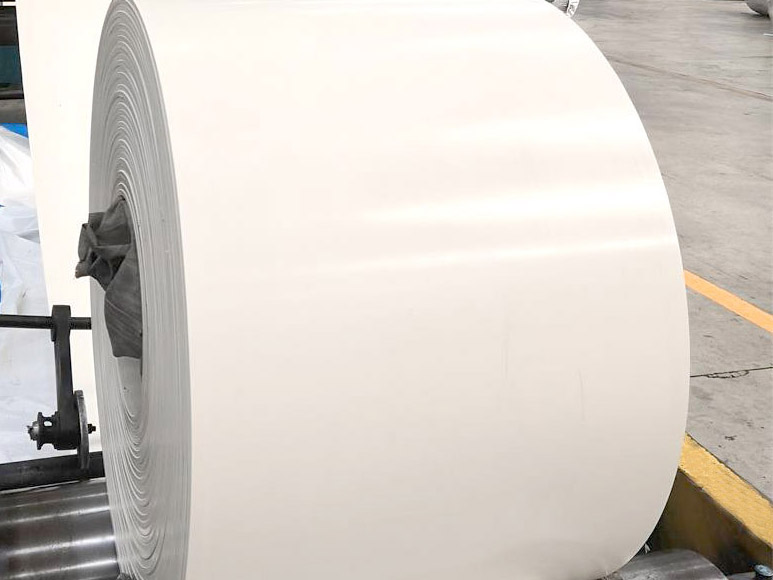Innovative Uses of Rubber Drive Belts in Modern Machinery
Innovative Uses of Rubber Drive Belts in Modern Machinery
Blog Article

In the ever-evolving landscape of modern machinery, rubber drive belts have emerged as crucial components that enhance efficiency and functionality across various industries. These versatile belts, including rubber conveyor belts and PVC conveyor belts, play a vital role in the transportation of materials, enabling smoother operations and increasing productivity. As technology advances, innovative designs and manufacturing techniques are continuously refined, ensuring that these belts can meet the demands of modern applications.
The development and production of rubber conveyor belts have seen significant breakthroughs, with an emphasis on durability and performance. With the ability to withstand extreme conditions and heavy loads, these belts are engineered to provide reliability in diverse settings. Similarly, PVC conveyor belts are making waves due to their lightweight nature and resistance to wear and tear, positioning them as ideal solutions for industries that prioritize hygiene and ease of maintenance. This article will explore the innovative uses of rubber drive belts in modern machinery and how advancements in design are propelling industries forward.
Design Principles of Rubber Drive Belts
The design of rubber drive belts is paramount to their effectiveness in various machinery applications. Key considerations include the selection of materials that provide optimal strength and flexibility while ensuring resistance to wear and environmental factors. The formulation of the rubber compound plays a critical role in achieving the necessary balance between durability and performance, which affects the belt's lifespan and maintenance needs.
Another essential aspect is the geometry of the belt itself. This encompasses the width, thickness, and overall length, which must be tailored to fit specific machinery requirements. Proper tensioning and alignment are also vital in the design phase, as misalignment can lead to inefficiencies and premature failure. Consequently, a well-thought-out design minimizes slippage and optimizes power transmission, ensuring smooth operation across a range of industrial applications.
Finally, the surface texture and pattern of rubber drive belts contribute significantly to their design. The choice of texture can enhance grip and reduce slippage, while patterns can facilitate better engagement with pulleys. Engineers must carefully consider these factors to achieve the desired traction and compatibility with other components in the machinery. A thoughtful combination of material science and mechanical engineering is key to producing effective and reliable rubber drive belts.
Timing Belt Supplier
Development Trends in Conveyor Belt Technology
Recent advancements in conveyor belt technology have focused on improving the efficiency and durability of rubber conveyor belts and PVC conveyor belts. Manufacturers are investing in research and development to enhance material properties, leading to belts that can withstand harsher environmental conditions and more demanding operational requirements. This has resulted in products that offer better wear resistance, superior grip, and increased load capacity, thereby optimizing performance in various applications.
Another key trend is the integration of smart technology into conveyor belt systems. With the rise of the Internet of Things, manufacturers are incorporating sensors and monitoring systems that provide real-time data on belt performance and health. This capability allows for predictive maintenance and helps in reducing downtime, significantly improving operational efficiency. As a result, businesses can make informed decisions on when to service or replace belts, thus prolonging their lifespan and reducing costs.
Sustainability is also becoming a prominent focus in the development of conveyor belts. Manufacturers are exploring eco-friendly materials and production processes that minimize environmental impact. The use of recycled materials in the manufacture of rubber and PVC conveyor belts is gaining traction, alongside innovations aimed at reducing energy consumption during production. These sustainable practices not only comply with regulatory standards but also appeal to environmentally conscious consumers and businesses, paving the way for a greener industry.
Production Techniques for Enhanced Performance
The production of rubber conveyor belts, PVC conveyor belts, and rubber drive belts relies heavily on advanced technologies that enhance their performance and longevity. One of the key techniques involves the use of specialized compounds that include additives to improve flexibility, durability, and resistance to wear and environmental factors. These compounds are carefully formulated to meet the specific demands of various industrial applications, ensuring that the belts can withstand heavy loads and operate in challenging conditions.
Another technique is the integration of state-of-the-art manufacturing processes such as precision molding and vulcanization. These methods allow for the creation of belts with uniform thickness and superior mechanical properties. Precision molding ensures that each belt is consistent in quality, reducing the risk of failure during operation. Vulcanization further enhances the physical characteristics of rubber, allowing for better elasticity and strength, which are essential for efficient performance in machinery.
Finally, the use of digital technology for monitoring and quality control during production has significantly improved the reliability of rubber products. Implementing real-time data analysis and automated testing systems helps identify any defects early in the production process, ensuring only the highest quality belts reach the market. This focus on quality, alongside innovative design techniques, contributes to the enhanced performance of rubber conveyor and drive belts across various modern machinery applications.
Report this page